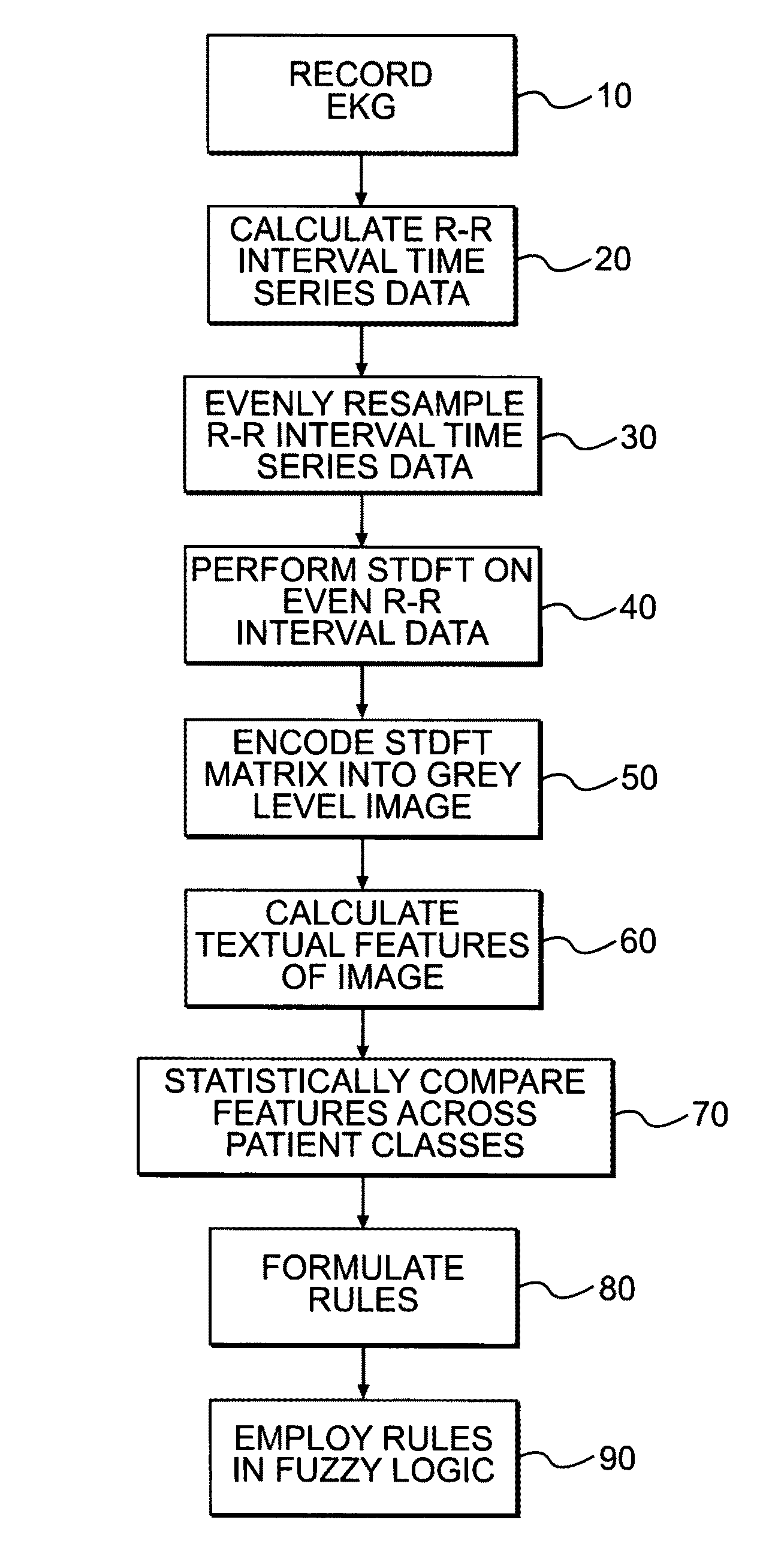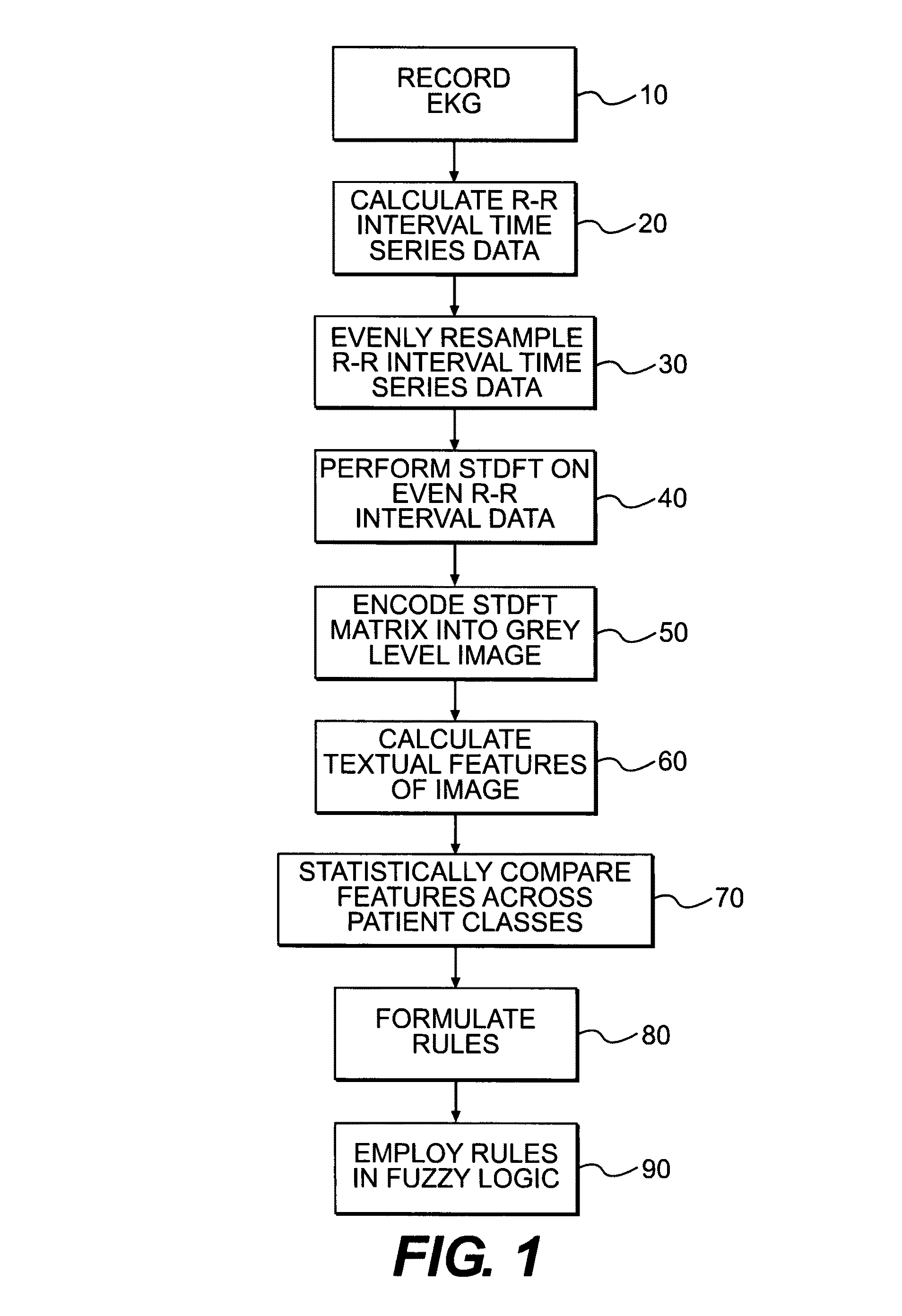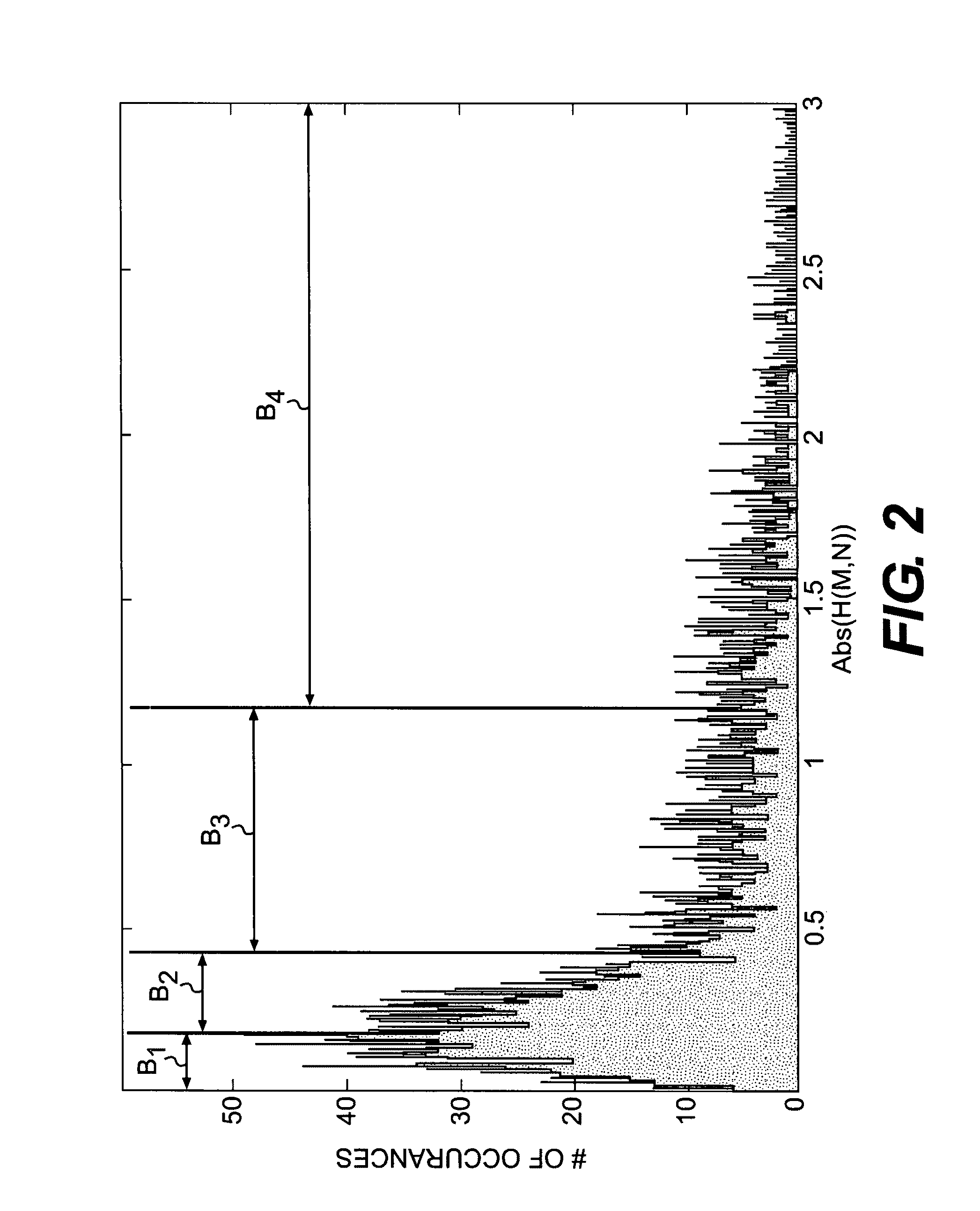Processing and analyzing physiological signals to detect a health condition
a physiological signal and processing technology, applied in the field of processing physiological signals and analyzing the processed signals to detect a health condition, can solve the problems of increased mortality rate, increased risk of high blood pressure, stroke, and myocardial infarction,
- Summary
- Abstract
- Description
- Claims
- Application Information
AI Technical Summary
Problems solved by technology
Method used
Image
Examples
Embodiment Construction
[0021]Although making and using various embodiments are discussed in detail below, it should be appreciated that the present invention provides many inventive concepts that may be embodied in a wide variety of contexts. The specific aspects and embodiments discussed herein are merely illustrative of ways to make and use the invention, and do not limit the scope of the invention.
[0022]In the description which follows like parts may be marked throughout the specification and drawing with the same reference numerals, respectively.
[0023]An embodiment of a method of signal processing according to an exemplary embodiment of the present invention is shown in FIG. 1. EKG measurements are recorded during sleep. The measurements are clipped to 900 seconds 10. Lead I of each EKG signal clip is used to calculate the R-R interval, heart rate, the R-R Interval Discrete Time Series is calculated for each clip 20. The resultant time series is evenly resampled at 10 Hz using cubic spline interpolati...
PUM
 Login to View More
Login to View More Abstract
Description
Claims
Application Information
 Login to View More
Login to View More - R&D
- Intellectual Property
- Life Sciences
- Materials
- Tech Scout
- Unparalleled Data Quality
- Higher Quality Content
- 60% Fewer Hallucinations
Browse by: Latest US Patents, China's latest patents, Technical Efficacy Thesaurus, Application Domain, Technology Topic, Popular Technical Reports.
© 2025 PatSnap. All rights reserved.Legal|Privacy policy|Modern Slavery Act Transparency Statement|Sitemap|About US| Contact US: help@patsnap.com



